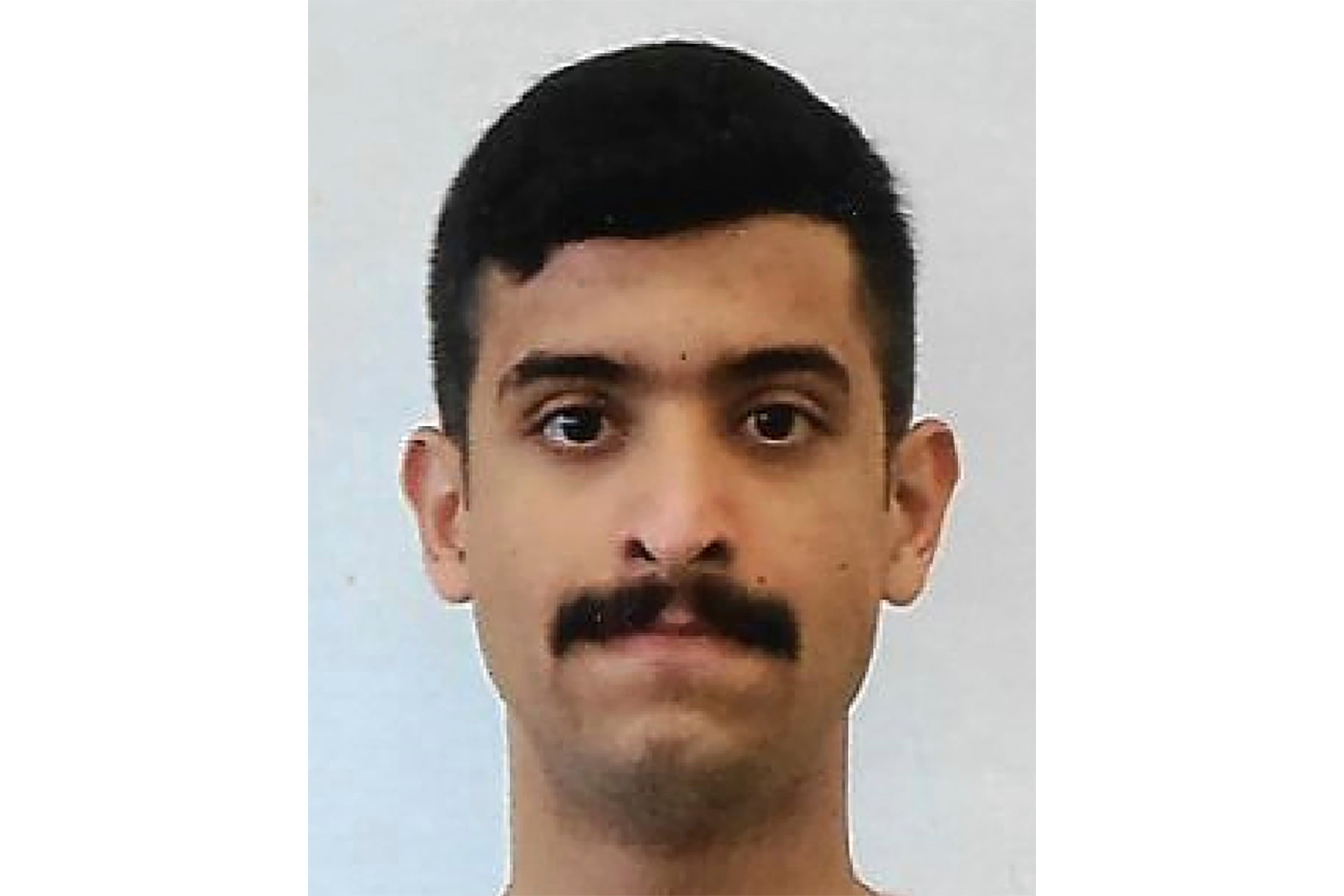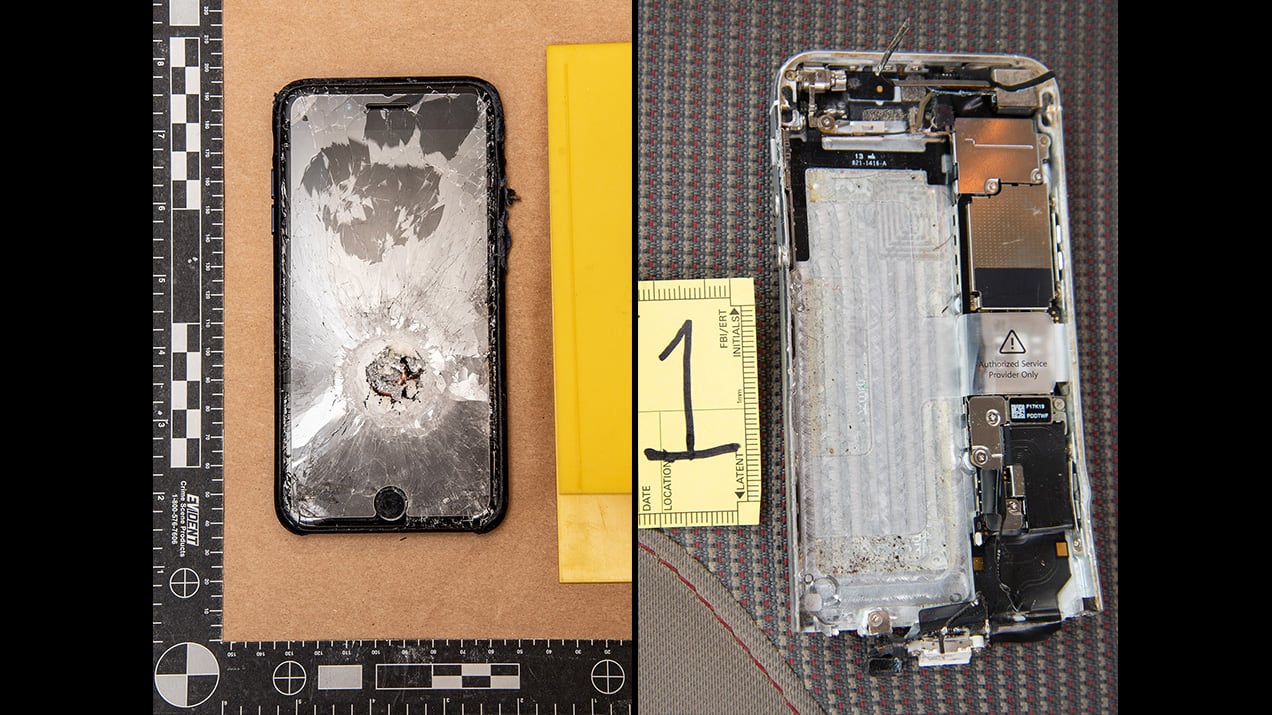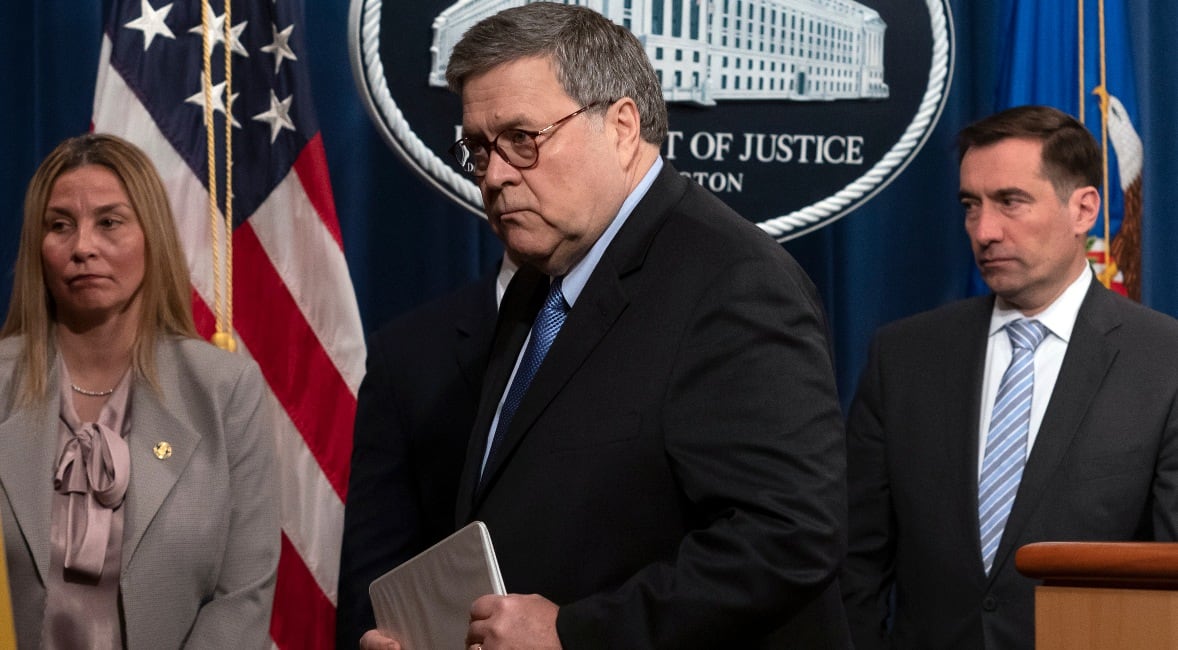Nearly two dozen Saudi Arabian military cadets who were training on American bases are being removed from the programs and being sent home in the wake of a December attack at Naval Air Station Pensacola that left three U.S. sailors dead and eight others wounded.
U.S. Attorney General William Barr announced the Saudi students’ removal Monday during a press conference at the Department of Justice in Washington. Barr said there was no indication the gunman, Saudi Air Force 2nd Lt. Mohammed Alshamrani, who was killed by a sheriff’s deputy, acted in concert with other Saudi cadets or foreign nationals in the program.
“This was an act of terrorism,” he said.
Of the 21 being removed, investigators found 17 had posted anti-American or “jihadi” content on social media and 15 had had contact with child pornography, mostly via a chat room in which one or two images had been posted.
Barr said none of the content rose to the level of federal prosecution and added that the Saudi government found the material unbecoming for its officers and would assist in the event of additional investigatory needs. Of those being removed, 12 came from Pensacola while the other nine were located at Columbus Air Force Base in Mississippi, Laughlin and Joint Base San Antonio-Randolph Air Force bases in Texas and Vance Air Force Base in Oklahoma.
There are about 150 Saudi cadets in the training pipeline at Pensacola.
After being notified of the concerning content, “the Department of Defense worked with the Kingdom of Saudi Arabia to withdraw the students from training and in consultation with the Department of Justice, the DOD worked with the Saudi Embassy in the United States to return these students to Saudi Arabia,” Pentagon press secretary Alyssa Farah said in a statement released Monday evening.
In the year and a half before the shooting, Alshamrani left a social media trail that indicated he’d been influenced by “jihadist ideology" and believed violence was necessary to defend Muslim countries. He also posted a message containing anti-American and anti-Israeli comments two hours before the attack as well as another that raised concern.

“We learned that the shooter posted a message on Sept. 11 of this year stating that the countdown has begun,” Barr said.
A senior Justice Department official said an investigation in the Southern District of New York that was opened after officials learned Alshamrani visited the 9/11 Memorial there with friends during the Thanksgiving break did not reveal anything.
Barr and FBI Deputy Director David Bowditch described a chilling scene in which Alshamrani arrived at a schoolhouse and cased the building, walking around and shooting others in what Barr said was “in cold blood." Alshamrani’s rampage lasted 15 minutes, eight of which he was engaged by Navy security. Investigators found Alshamrani’s handgun, which they previously have said he purchased legally in July using a hunting loophole, as well as 180 rounds of ammunition. He also shot photos of President Donald Trump and a past commander in chief, Bowditch said.
But investigators said they may still be missing key pieces of evidence. The department has tried to gain access to two iPhones that Alshamrani carried, including one that he shot during the rampage and another that was found damaged in his car. FBI crime lab experts have gotten the phones working but “both are engineered to make it virtually impossible to unlock without the password,” Barr said.
Despite pleas to Apple, the company has so far not assisted in helping unlock the phones. A senior justice department official speaking on background said it is not clear that the company has the ability to do so.
“It is very important for us to know with whom and about what the shooter was communicating before he died,” Barr said, hinting at the larger issue of the law enforcement and privacy rights divide.

Barr also said that early reports that two other Saudi cadets arrived with Alshamrani and took video of the attack were incorrect. Those cadets “took some video of the resulting commotion around the building” and later cooperated fully with authorities, Barr said.
About a dozen Saudi students who knew Alshamrani were restricted to the Pensacola base by their commanding officer while the Pentagon reviewed policies and procedures guiding officials who screen international military students before being allowed into the U.S. to train.
That included a moratorium on all operational instruction for Saudi students in the country now, plus a bar on new students entering the training programs, Pentagon spokesman Jonathan R. Hoffman told reporters during a briefing in December.
Barr declined to speculate as to whether improved vetting would have deterred the attack. Pentagon spokesman Air Force Lt. Col Uriah Orland told Navy Times in an email late Monday afternoon that Defense Secretary Mark Esper "has the results of the vetting review and we will release appropriate information in the near future.”
The Navy posthumously advanced two enlisted sailors — Airman Mohammed S. Haitham and Airman Apprentice Cameron S. Walters — to naval aircrewman mechanical third class. Ensign Joshua K. Watson was advanced to aviator. Acting Navy Secretary Thomas B. Modly had previously awarded Haitham and Walters Wings of Gold, posthumously designating them naval aircrewmen.
Courtney Mabeus-Brown is the senior reporter at Air Force Times. She is an award-winning journalist who previously covered the military for Navy Times and The Virginian-Pilot in Norfolk, Va., where she first set foot on an aircraft carrier. Her work has also appeared in The New York Times, The Washington Post, Foreign Policy and more.



